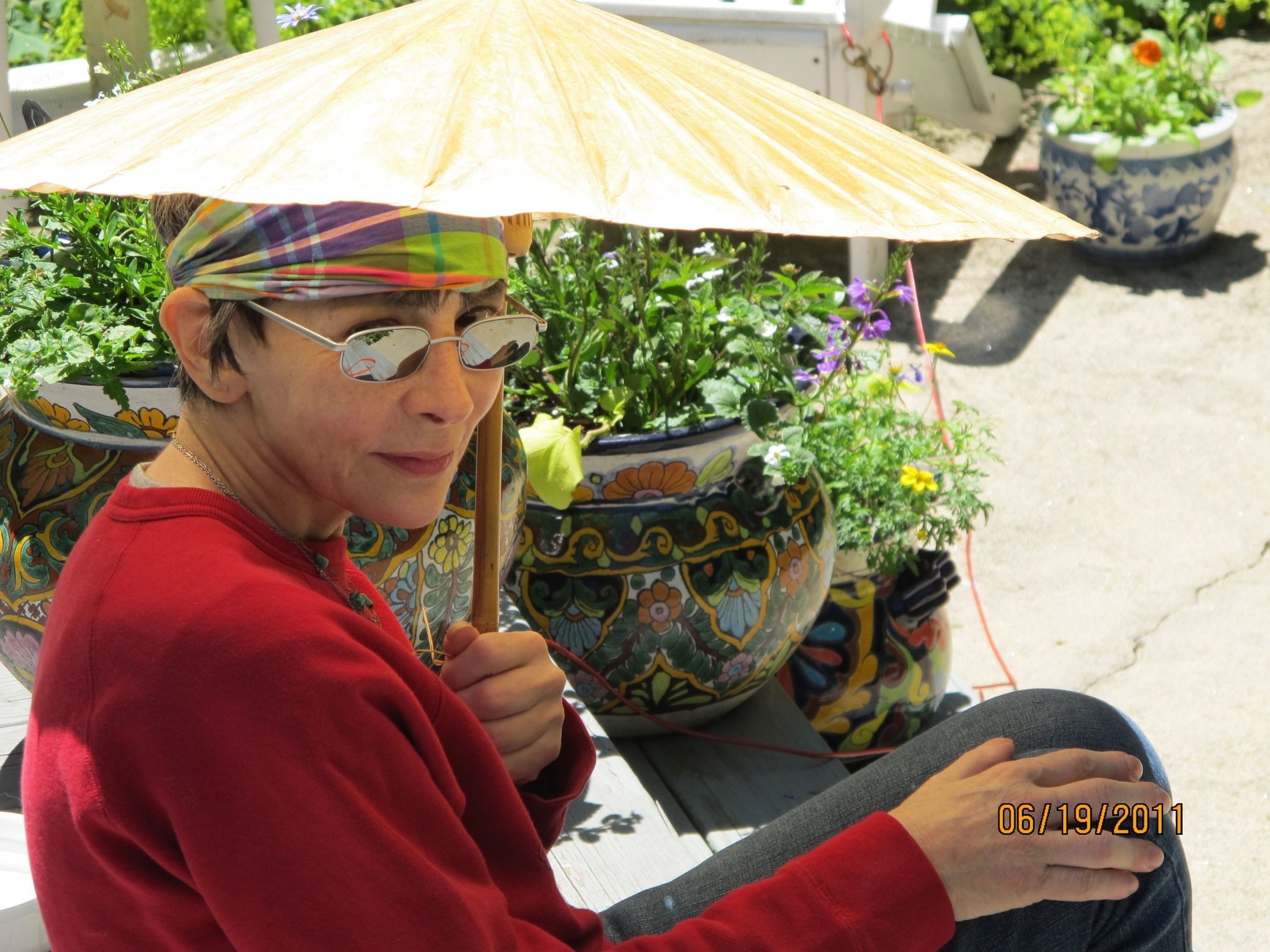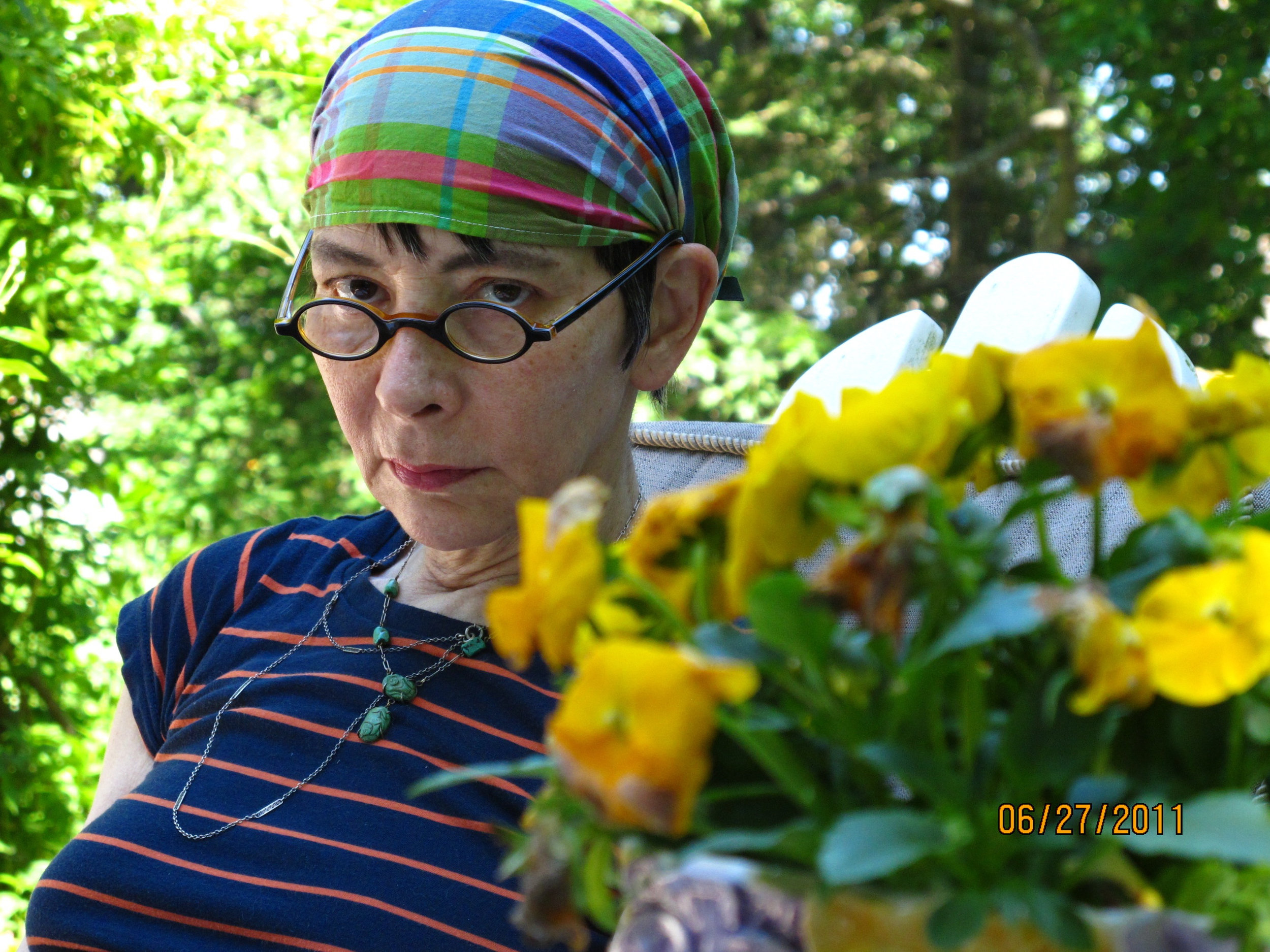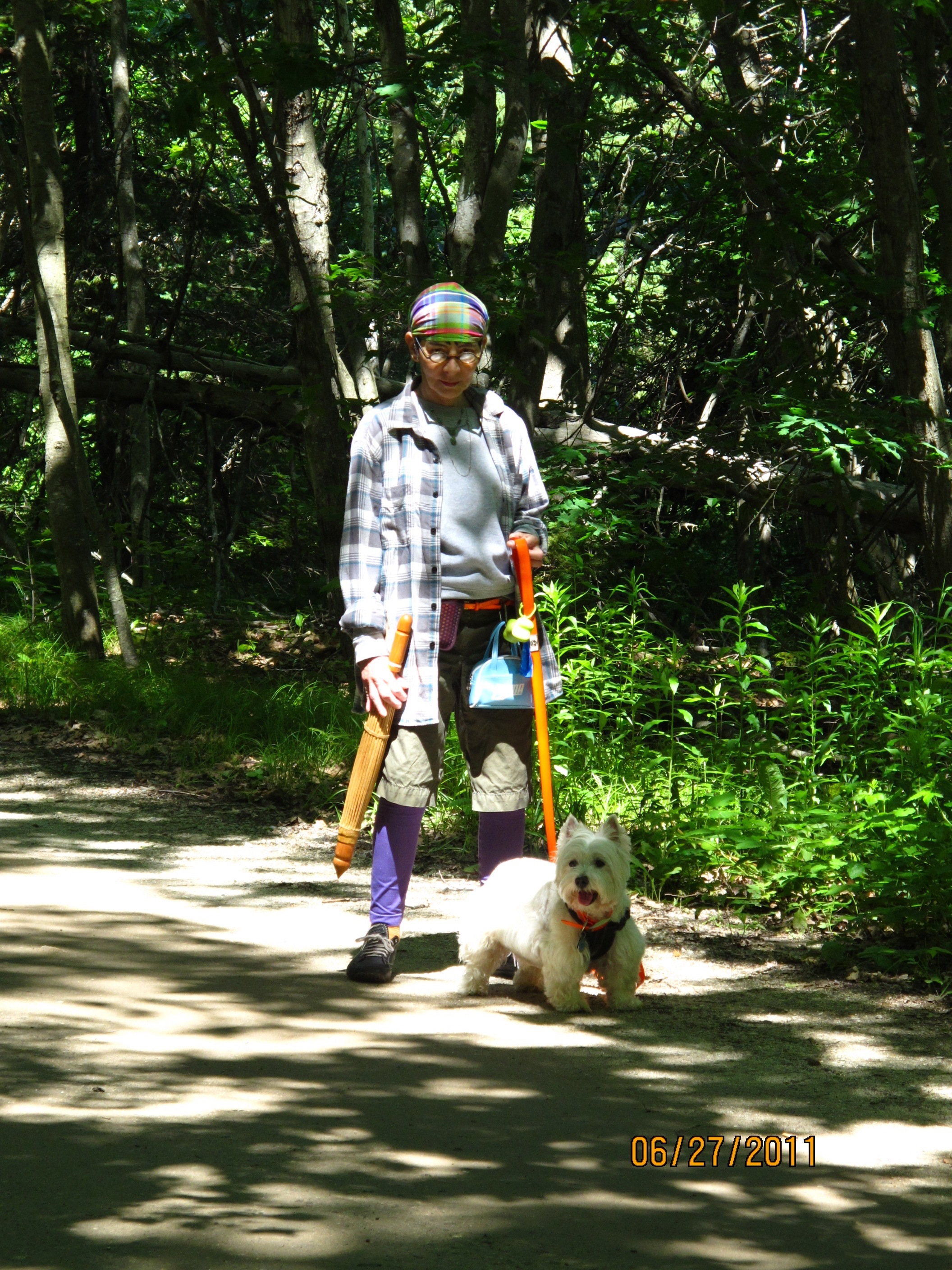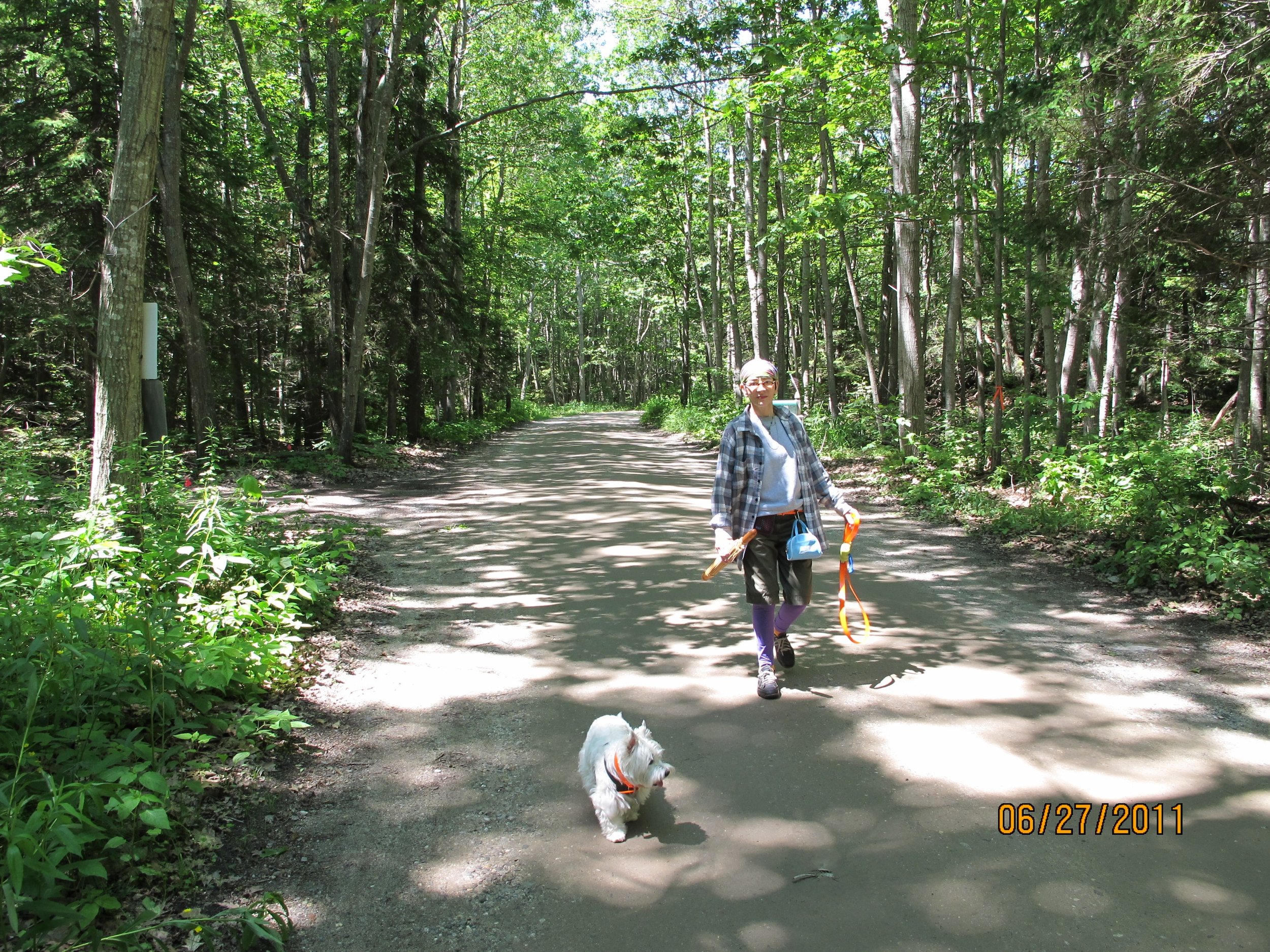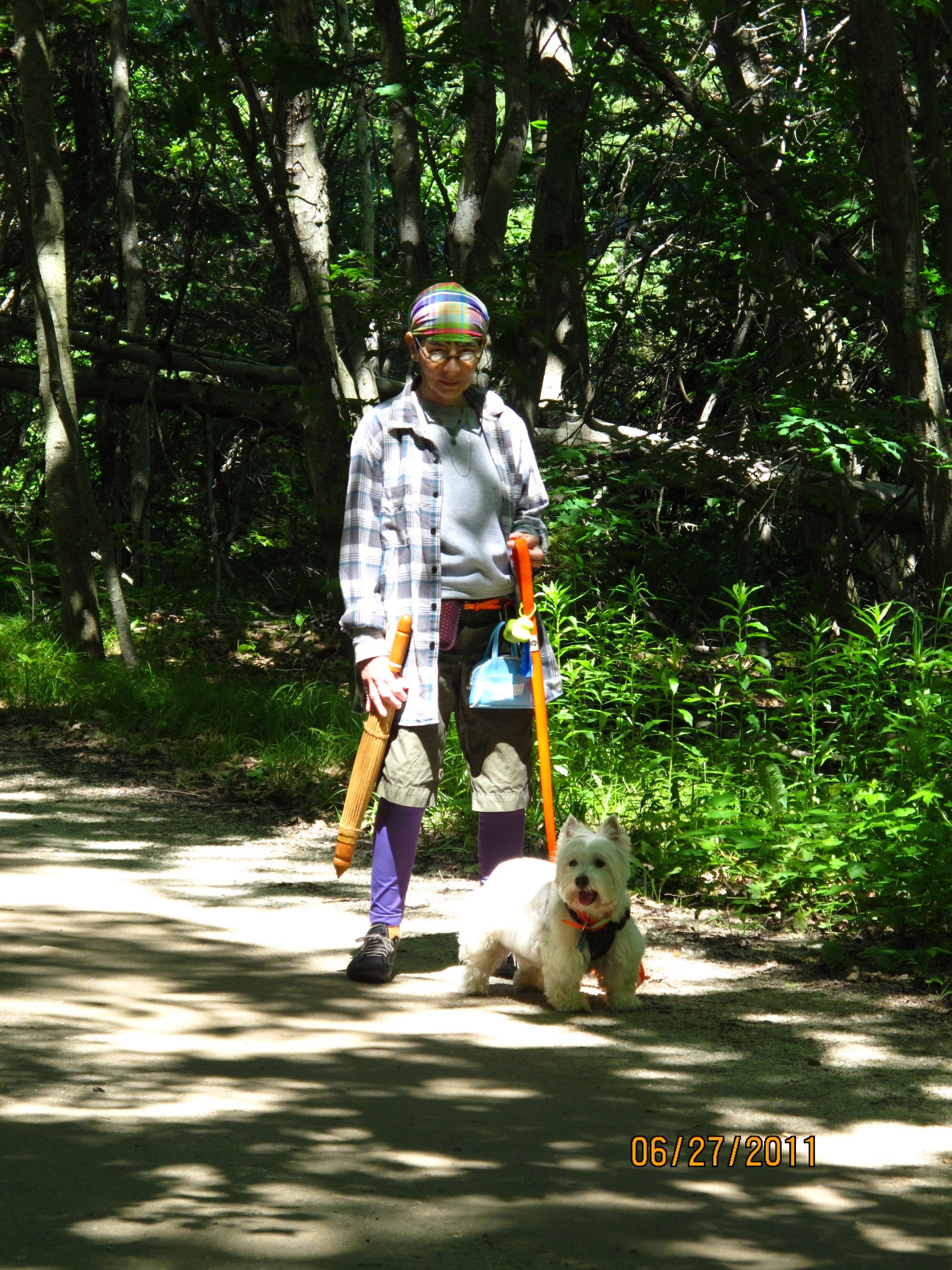Each time I create from a perception I discover a new perception. Each perception creates new within me. It fosters discovery and understanding. I would see a sweater that I knew Donna would love. I would create an image of her wearing it, seeing us going to dinner, us laughing, and talking.
Read moreRedemption Tour
Since Donna died I measured myself, her death, her love for me, and what it all means. I held the tape measure up to it all. I found solace in what was analysis. Not the raw emotions. It became exposition on my grief. Negligence to not till the soil of my loss to make what grows from that trauma grow. I thought I grew, changed, as I struggled.
Read moreLook Honey I Shrunk My Venn
If this was a Venn it's a Venn of two circles overlapping greatly. One circle was a widowed man of a certain age alone without meaning and purpose. The other circle was the grief community, my grief journey/work, and my desire to bring meaning to my loss and others loss.
Read moreThe Chaos of Grief Calmed By Memories
Memories are how we learn. As we age our experience grows largely through our memories. Adults learn from experiences which become memories. New and meaningful experiences (i.e. memories) are integrated it into our consciousness. The more meaningful the experience the more deeply it is embedded into our memories.
Read moreAnimating My Grief Like a Pixar Film
There exists a ‘grief illiteracy’ in our collective lives. I would say with 20/20 hindsight the grief has animated my sense of loss which is new, a deeper understanding of Donna and what love is, the sincere wish I could share what I am learning and doing with others in the same state of shit.
Read moreMy Grief Through Their Eyes
I was the docent for Donna’s death. I have been writing a chronicle reflecting on my memories of Donna and this period of guiding her to death. I interviewed those who knew both of us to learn what they saw and felt. In a way to see a truth outside of my memories.
Read moreIs My Grief My Crutch?
Confetti Hearts
I miss Donna. I miss the love I gave. I miss the love I received. I long to once again be loved into being. These emotions are paper cuts today not yesterdays lacerations. In all fairness even today they can bleed freely. Why have I not moved up or down stream? Why am I not sitting on the bank under a willow tree tossing pebbles into the water?
Read moreGrief is the Thing with Feathers: Just See It
Grief is the Thing with Feathers gives us all a chance to step back, sit down, and think about our grief in real terms. Harsh terms. Powerful terms. We can find our life and world in this play.
Read moreUntangling The Narrative of My Grief Avatar
It's not as if grief speaks to me per se. It is more that in this state of grief whether roiling or calm grief heightens my awareness. I hear a phrase, read a passage, listen to a song and think about it. Just think and learn. Learning is the only thing that changes our consciousness. Even within this state of grief driven knowledge I wonder, am I missing today and tomorrow because my vision is in my rear view mirror? Can I untangle myself from looking back to construct a new environment for my emotions to reside?
Read more"Love Is Watching Someone Die"*
Hospice is about dying well. There is no good death. Any death is bad and painful but dying well surrounded by friends family loved ones changes the dynamic for both the patient and the family. It makes the time to the finite end better and kinder and comfortable but more important is the time after death. That is our long darkness, the time after death of a loved one.
Read moreRevisiting The Insipid Nature of Grief: The Horse Latitudes
Identifying my journey as starting at caregiving seems odd since there is a whole shit load of years prior to that 2009 moment when you learn your wife of 28+ years has advanced cancer and six months to live. I guess that is where life for me began, with the specter of death looming over us both. Life begins at death? How odd
Read moreDying Season Part IV: Am I Maudlin?
“Now would be a good time to have end-of-life discussions with her,” the Hospice Rabbi and social worker said. “What does she want for her funeral? What are her regrets? Did she find joy in her life?”
Read moreDoes Your Grief Sofa Need to Be Replaced?
Donna and Nina taking a nap before Sunday Dinner
Loss, grief, and mourning is the furniture I've placed in the rooms of my life. I rest on them, sleep on them, put my feet up to watch TV, and game. I move my grief furniture around to see what works better where. What I don’t do is put them in storage nor leave them for Goodwill. These are the emotional elements of my life.
Read moreDying Season Part III
Monday July 11 Dr. B had scheduled an MRI and other tests. I mostly sat and texted friends to let them know where Donna was and why. I was trying to escape where I was with thoughts of chores: heading home to free Nina from doggie daycare, feed her, and give her insulin before returning to the hospital. Donna returned to her room after the MRI. Donna rested in her hospital bed looking so small. She was a figure on the horizon moving away from my sight.
We sat and talked. We didn’t speak about the future which felt like a dense fog settling around our shoulders. Our hopes reflected off the mist. Of course there was a future. There always is a future but not one you could see it or want to. There was only the immediate moment to navigate to get to the unseen future. The future never stops and waits for us. It just hides while you struggle to visualize what it may be. I left that evening and entered an empty home.
The next day Donna was to have a thoracentesis to drain the fluid around her lungs.
I held Donna’s hands and watched her grimace as the resident pushed the catheter through her back, into her lung cavity. “This will work,” I thought. “This will work, she’ll be home soon.”
The next day there was good news. The thoracentesis had worked.
Until it didn’t. The fluid came back. I held her hand again, watched her face again, as another catheter stabbed her back. This time it worked. Until it didn’t.
“We need to discuss palliative care,” Dr. B. said.
“Great,” I thought, “this will give us, her, me, more time.”
Normally there were two chairs in the room. Today it looked like a makeshift conference room with four additional chairs. They were perfectly arranged to project a sense of community and comfort. Dr. B. orchestrated where the chairs were placed, who sat, and who stood, thinking all the while of how this meeting would affect her. Palliative care was going to be a major change in her status. No longer was Donna living and being. She was Donna at the end of life.
The residents, social workers, and Hospice staff attending the meeting followed Dr. B.’s lead, staying focused on Donna the person, her life, and my status. Nobody was making the rounds with a clipboard.
Donna wasn’t engaged. Her eyes followed the chairs being moved and the white coats assembling. Her shoulders slumped in surrender. It was the first time I’d ever seen her passive. She wasn’t asking questions. “Don’t give up,” I thought. “Don’t, please.” I couldn’t say it out loud because it would expose the obvious, that she was unable to rise and take flight from her bed.
Dr. B. and Dr. S. suggested Home Hospice. When the Hospice intake staff spoke with me, they weren’t wearing white coats. This was not clinical. It was business. The conversation felt like a sales call, done in a busy hallway of rushing physicians and nurses, with families of patients sitting nearby. Here I was, speaking and answering questions about Donna’s death, in the most public of venues for the world to hear. Intake handed me papers to sign. I did not feel like a person about to lose his wife of 28 years, being offered hope and dignity. I felt like a transaction. The home hospice staff scheduled a delivery of the bed and other items. The next day I sat home and waited. I bought sunflowers to brighten up what would be her death bed.
That Saturday Dr. S was reviewing charts on the unit. We spoke and he said the staff, Dr. B, and hospice thought the in patient hospice unit would be a better alternative for Donna and me.
I had been holding on to that trope of a wonderful, peaceful death at home, surrounded by friends and family circling her bed like supplicants kneeling to receive the communion of her life passing. Now I was hearing that even if she came home, she wouldn’t have that. I wonder to this day if Dr. S. was straight with me, or if they all thought I was a caregiving failure and couldn’t be trusted.
On July 18, 2011 Donna was transferred to the hospice unit.
Dying Season Part II
Donna and I returned from Maine July 2, 2011. Our time at the cottage Donna tired easily and found walking, especially the stairs from the deck down to the driveway very difficult. I held her arm as she navigated the stairs one painful step at a time. This trip to Maine was precious. We walked to the beach with Nina, cooked lobster, went for ice cream, and shopped in Portland. As I look at the photos from that trip she seems resigned to her reality.
A year later, October of 2012, I went back to the cottage with Nina to spread some ashes in the cove where we once sat and stared at an infinite horizon of the ocean. When Nina and I arrived at the cottage I sat in the car unsure of why I went back. I was afraid of the memories. I felt lost and alone. Being here without Donna was a slap in her face coming to the place she loved without her. Yet here I was after six hours of driving. I took the bags to the bedroom. When I closed the door, there behind the door on a hook, as if waiting for our return, was a scarf Donna had forgotten. It was going to be okay she was there with us.
July 4, 2011 was quiet and I made hamburgers. Donna’s oncologist scheduled a CT for July 7 to determine if the new round of chemo, Gemzar, was working. His hope was that if we could shrink the tumors this might resolve the pain. Donna’s first and second rounds of chemo in 2009 and 2010 worked why wouldn’t this one. Why? The pain from the hypertrophic pulmonary osteoarthropthy was not resolving and NSAIDs were the drug of choice. NSAIDs gave her some relief. Just some.
On July 7 we went to the CT center. I helped her put on a gown and lifted her onto the CT table for her scan. It was freezing and Donna’s teeth were chattering. We covered her and I walked to the waiting room fearing of what would be seen. At home we had dinner and watched TV. It was an early night since the next day Donna was scheduled for her next round of Gemzar.
At the oncology center we checked in at the desk and sat to be called for chemo. I stood to go get some soup for Donna which she liked while getting an infusion. As I was about to leave looking at Donna to make sure she was okay. Dr. B came out and asked us both to an exam room. As always he held the door and asked about us. We walked the hallway with exam rooms on either side. We entered exam room 5 and sat. I remember feeling I was living in the burnt edges of hope.
Dr. B a generous oncologist with heart, spirit, compassion, and brains said the CT showed that the Gemzar was not working. The tumors had grown a bit. He was not sure what the next line of treatment would be if any. More troubling was the finding of fluid in the pleural cavity, the membrane surrounding the lungs. It needed to be drained.
Dr. B scheduled a thorcentnesis for Monday July 11. Donna would be admitted to the hospital for two days and sent home.
Needless to say we spend the weekend in a fairly low key fashion. That is being generous, it was more zombie like. On a usual weekend the events were menu selection for Sunday, shopping, either eating in or out on Saturday. Then a movie. Sunday was cooking. I didn’t have the energy or drive to shop or cook. Besides Donna was going to be in the hospital. Sunday we walked to a local restaurant three short blocks away, the Odeon.
The Odeon has been a staple in the neighborhood since 1980 when it was a great dinner spot (still is) in Tribeca, best brunch for a hungover Sunday, and a late night post disco SNL crowd. We knew of it and visited before we moved here. The food was French bistro.
We left our apartment and slowly walked to the Odeon. The pain was evident on Donna’s face and breaths as she navigated haltingly stepping up the curb even with a wheelchair ramps. We sat and had dinner mostly in silence. Generally we can spend time together just being us without talking. This evening the silence was not wanting to speak about tomorrow for fear the devil would take notice. The walk back was a slow and telling. It said so much than any scan, lab report, or medical file. It felt like a final chapter of a novel. We finally and painfully made it home. I helped her change into PJ’s. We watched some TV but turned in early.
The next morning July 11, 2011 we woke as usual. I made Donna a latte. I had espresso. I took Nina to doggie daycare. When I returned I helped her dress and we headed out. The exercise of closing and locking the door done a million times felt different. I did not completely understanding that moment in our lives. Mostly in her life.
“Closing The Door
One day arm and arm
We left home and closed the door
You never returned”
I carried her to the corner and got a cab. We arrived at the emergency entrance of the hospital. I ran in got Donna a wheelchair and pushed her into to admitting. We were told to head to the 9th floor. Donna needed to use the bathroom. I carried her in helped her sit and carried her back to the wheelchair. This was a first for us and I am sure she was mortified. We made it to the 9th floor her room was waiting or was it laying in wait.
Does a Memory Love You?
On Instagram (loveltrs2d) my followers and those I follow are widowed. Some have lost a child or parent. Many are fighting grief while offering us hope and help. Key to their collective posts are memories. We embrace memories because they act as mortar holding the worn bricks of our lives together. Memories refresh our thirst for meaning of the unknown. Memories huddle in the dark to revel themselves at times frightening us to our core. I have written about memories A LOT
There are second order memories that gives me pause to smile. These are the memories of Christmas as a child. Memories of my first bike. A vacation to Cape May. They are moments or places that for the most part I evoke as needed or when reminded of a past. These first order memories are a place setting of context for my years on earth.
Then there are memories of Donna and us. These are first order memories. The memories of Donna are mostly painful because I remember what was in relationship to what is not. The memories of Donna are chisels chipping away at my days. I cover my eyes to keep from being blinded by the sharp fragments flying off their edges. I will admit at times these memories warm me, comfort me, hold me, and I am happy.
I love all my memories. These second order memories are bits of light we all hold. I cautiously respect the first order memories of Donna because of the power they hold over my well being and life. They are a narrative of my future reflected in a rear view mirror. I believe they speak to me and wake from the somnolence of my life even if they hurt me. Which means I'm alive.
Are Memories Symmetric or Asymmetric?
Memories sit there in my mind, before my eyes, in my ears, or on my taste buds. Some are dusty yet have not faded into black and will suddenly raise themselves up and dance before me in a silent ballet. I have collected these memories like shot glasses or salt and pepper shakers from travels near and far. When Donna died I cleared a shelf and began to assemble those memories. Some were centered on a shelf others lined up according to height. Neatly displayed and ready.
So my memories sit and wait. Or are they waiting? I wonder. Do I reach for memories for reasons known or unknown or do the memories in some anthropomorphic fashion decide to come to me? The first order memories of childhood I reach for randomly or through provocation by an image, a word, or a taste. Second order memories of Donna feel different. Many times I reach for them for comfort, peace, joy, or just because. Other times they charge at me full bore slamming into my conciseness like fly buzzing against a screen trying to find freedom. It is these moments where I think memories are alive, yes they are alive in me and only me. They have a life and will of their own.
After seven years of folding memories like origami swans I wonder do they love me? Are these memories active participants with me? I would say yes to the later because it is me who gives them life and permission to enter my world. Do they give me life? Do they love me? Am I simply projecting what I want the memories to do?
Donna left me her memories when she died. But without her they are just memories. As Donna like to say “There is a reason they call it history. It happened then.” It is not then it is now and they are here crisp as the day they occurred. As real as they are they are just neurons and synapses crashing together to create emotions that fit a broad spectrum. I own these emotions because I drove memories to me like logs speeding downhill in a sluice to the mill and made into chairs and tables to furnish my life.
Donna and I loved each other. After her death I still love Donna. Did Donna stop loving me when she died? I have her memories from the land of then. I give them life. I love them. I hope they love me. It is the best I have. Donna will never return but I can go to her anytime I choose.
Dying Season Part I
Dog Is My Co-Pilot: Donna, Nina, and I driving to Cape Elizabeth Maine.
Donna died seven years ago on August 7, 2011. My how time flies. Well not always. There is that moment each year when time and memories crawl across my mind like a tortoise. Slowly one step at a time bobbing its head side to side measuring the terrain. This tortoise of time stops and considers the date of Donna’s death and where we were in the months leading up to it.
What surprises me each year is the fact I know August 7th is there. I realize it is coming. What I don’t see are the unconscious machinations that unfold and suddenly, I am there again. That is my dying season.
January 2011 Donna’s physical health was failing. Her cancer was producing a form of osteoarthritis. Walking was difficult and the pain was progressive. In early June a third round of chemo was offered and hoped to reduce tumor burden and beat back the crippling pain. We had planned a trip to Maine a town just outside Portland called Cape Elizabeth. A few years earlier we found a lovely cottage with a garden and short walk to the a cove with a beach. It was peaceful and beautiful. Just what we needed. The first infusion of this new round of chemo was administered. We left for Maine.
The photos below are from that vacation. Within a month Donna would be in hospice. June begins the dying season.
My One Trick Pony and Pixar's Coco
This was the cake topper on our wedding cake May 15, 1983.
Since 2011 I have been writing, podcasting, and diving head long into love, loss, grieving, and memories. I have a modicum self-awareness and I’m thinking that this topic playlist is on repeat way too much, too depressing, and too boring. Am I a one-trick pony ready for the glue factory? A point of reference why I think that. My other site www.bioc.net has many podcasts and blog posts on these topic. This site www.donnathebook.com is new and is meant for the book. Add to that all the Tweets on the topics. One. Trick. Pony.
The Pony
In 2016 in the US there were 41 million adults between the ages of 55-64. There are 49 million adults 65+. Those age groups are 13% and 15% of the total US population respectively. In 2016 366,445 US adults age 55-64 died. During the same year over 2 million US adults 65+ died. I pulled data for that demographic because that's where I reside.
According to the CDC death rates for age groups 15 to 64 have increased in 2016 significantly while the older Americans 65 to 85+ have decrease significantly. Total deaths in the US for 2016 was 2,711,402. Older Americans appear to receiving better healthcare. Still death is death no matter the age. When one person dies someone is left behind to grieve.
In todays society death and dying are no longer a community ritual where a village gathers around the family members to comfort and support. We don’t die alone today. It is more likely that those left behind are alone. Families and networks are spread out and virtual in many cases. Leaving the living with a need to find support and help navigating grief. This is not all negative since there are support groups and counseling to help with the loss and grief. More is more when it comes to grieving. Since we all grieve differently those who grieve may find a voice that they can identify with.
There is an audience for loss, grief, and mourning. A large audience. That is the audience I want to speak with. I want to help them see grief and loss though my eyes, my story, and life. In some small way I want those who are grieving not to short cut their memories nor their grief but learn from my experiences, if my experiences match theirs or it can serve as a light to find their way.
I believe adults learn when they want to solve a problem. The grief we feel following the death of a loved one is a problem. A problem without an easy solution. Adults seeking solutions to problems will learn and incorporate what they’ve learned from experiences of others. My experiences and realizations are additive to other, not all but some.
When Donna was diagnosed I began to grieve. That was three plus years before she died. The day of her death a friend said that the only way to mange grief and not let it kill you is to attack it and examine it. Ego, all the reading and writing to solve the problem of grief for me. What I learned became the basis for my thoughts and actions.
Pixar’s Coco
Pixar’s Coco was on my list. I never got to see it on the big screen. A few days ago it showed up in Netflix. I will spare you my review other than saying it was beautiful, touching, smart, and a great story. Here are a couple of reviews for hell of it.
The central theme in Coco is Dia de Muertos (Day of the Dead). It is the day when people go to cemeteries to be the souls of the departed. Families and friends gather to pray and remembers those who have died to aid in their spiritual journey. Shrines and alters are built with photos of those who died to aid them in a visitation. Remembering the dead is key to their spiritual journey.
The Gospel Coalition has a great piece “Remember Rightly with Pixar’s Coco”. This post captures the central theme well.
"Remembrance and loss are central to the plot. Residents of the Land of the Dead depend on their living families to maintain their memory. If lost, the dead dissolve into ethereal dust and drift away, forgotten forever. Cocoportrays forgetfulness as a powerful force both in the present and afterlife."
Central to my writings about love, loss, and grief are the importance of memories. Here are a few posts:
“Donna, A Photo Memoir of Love and Loss" is her story. Our story. On the surface to all who knew us our story and lives were largely unknown. I wanted to make it known, for her memory. Soon I will be dead and the book will be my memory for a short amount of time. This is not a vanity project. It is a memory project. I am not trying to push immortality just a small sweet tale of love, loss, life, memories, and photos.


















